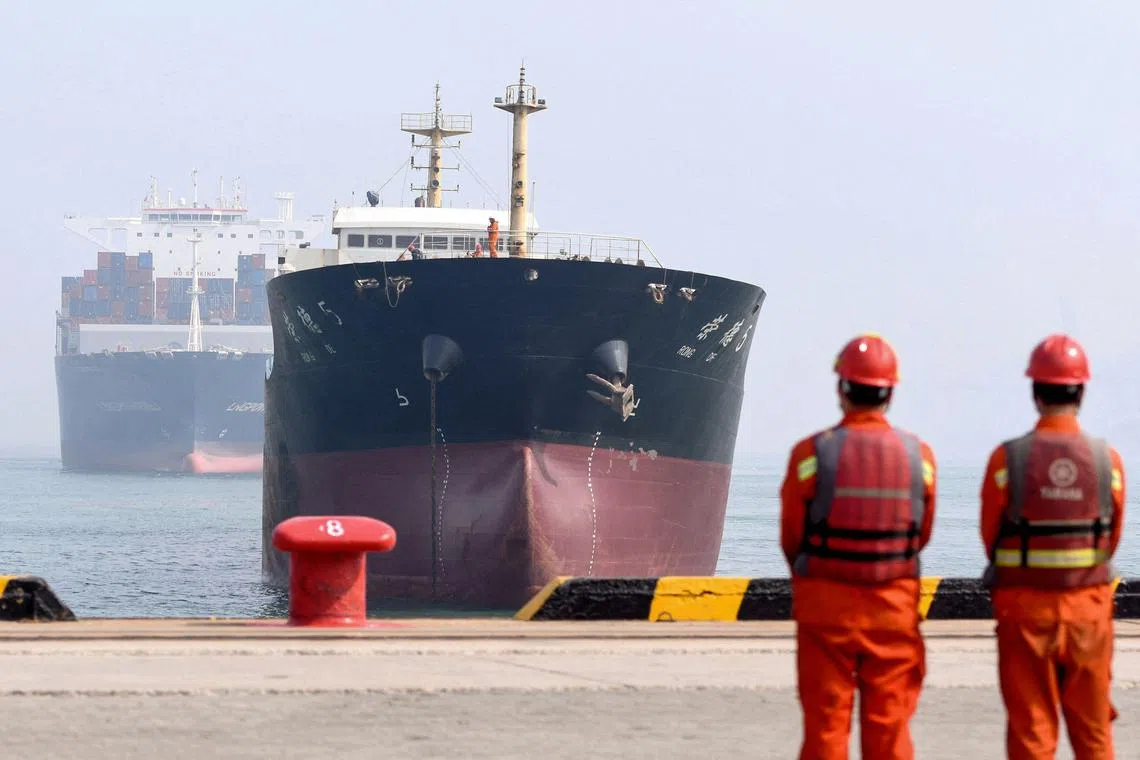China imports shrink and exports slow, darkening economic outlook
Sign up now: Get ST's newsletters delivered to your inbox

Inbound shipments to China fell by 7.9 per cent year on year, while exports grew by 8.5 per cent in the same period.
PHOTO: AFP
Follow topic:
BEIJING – China’s imports contracted sharply in April, while exports grew at a slower pace, reinforcing signs of feeble domestic demand despite the lifting of Covid-19 curbs and heaping pressure on an economy already struggling in the face of cooling global growth.
Inbound shipments to the world’s second-largest economy fell by 7.9 per cent year on year, extending the 1.4 per cent decline seen a month earlier, while exports grew 8.5 per cent, easing from the 14.8 per cent surge in March, Customs data showed on Tuesday.
Economists in a Reuters poll had predicted no growth in imports and an 8 per cent increase in exports.
Government officials have repeatedly warned of a “severe” and “complicated” external environment in the wake of mounting recession risks for many of China’s key trading partners.
However, the sharp deterioration in last month’s trade flows will only renew worries about the state of external demand and risks posed to the domestic economy, especially given the frail recovery from a year earlier when inbound and outbound shipments were severely disrupted by China’s Covid-19 restrictions.
“Given the gloomy outlook for external demand, we think exports will decline further before bottoming out later this year,” said Ms Huang Zichun, China economist at Capital Economics, in a note.
“We still think reopening rebound in domestic demand will drive a recovery in imports over the coming months,” she added.
The downturn in imports suggests that the world economy will not be able to count much on China’s domestic engine of growth, and as the nation re-exports some of its imports, it also reinforces the extent of weakness in some of its major trading partner economies.
Analysts say the sharp global monetary policy tightening campaign of the past 12 to 18 months and recent Western banking stress remain concerns for revival prospects of both China and the world.
Shipment growth to Asean slowed to 4.5 per cent in April from 35.4 per cent last month. The region is China’s largest export partner.
Other recent data also showed that South Korean exports to China, a leading indicator of China’s imports, were down 26.5 per cent in April, continuing 10 consecutive months of decline.
China’s coal imports fell in April from a 15-month high in the prior month, snapping back as demand weakened in the Asian giant. Imports of copper – a proxy for global growth – and natural gas were also down in the same period.
“The contraction of imports may be partly driven by the slowdown of global demand, which, in turn, affects China’s imports of parts and components for the processing of exports,” said Dr Zhang Zhiwei, chief economist at Pinpoint Asset Management.
The recent official manufacturing purchasing managers’ index for April
China’s first-quarter growth data last month, while offering some relief, also raised doubts about the demand outlook due to property market weakness, slowing prices and surging bank savings.
The government has set a modest economic growth target of around 5 per cent for this year after badly missing the 2022 goal. REUTERS

